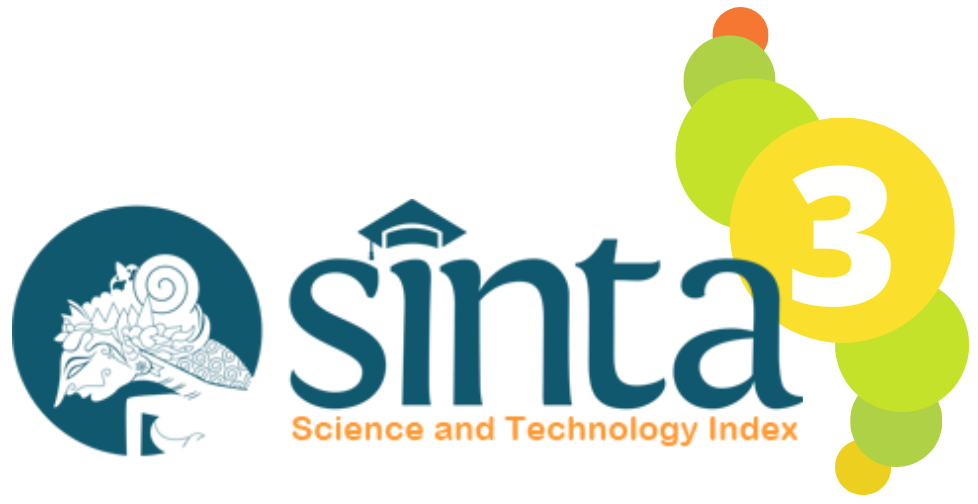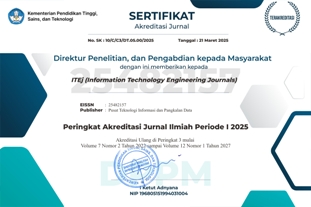Integrating IoT and Artificial Intelligence for Sustainable Smart City Development: A Case Study Approach
Abstract
Rapid urbanization growth has intensified the demand for sustainable smart city solutions that optimize resource management, improve citizens’ quality of life, and reduce environmental impact. Integrating Internet of Things (IoT) technology with artificial intelligence (AI) offers transformative opportunities to address these challenges by enabling real-time data collection, analysis, and decision-making. This study explores the potential of integrating IoT with AI for sustainable smart city development, using a case study approach to examine its application in diverse urban domains, including energy management, transportation, waste management, and public safety. The research highlights innovative IoT-enabled systems such as smart grids, intelligent traffic control, predictive waste collection, and AI-driven surveillance, demonstrating their ability to improve efficiency and sustainability. Case studies from globally recognized smart cities such as Singapore, Barcelona, and Copenhagen illustrate the benefits and challenges of adopting these technologies. Key findings reveal significant improvements in energy efficiency (up to 25%), reduced traffic congestion (up to 30%) and optimised waste management (up to 40%). However, challenges such as data privacy, interoperability and high implementation costs remain barriers to large-scale deployment. This study proposes a framework to address these issues, emphasizing collaborative governance, robust cybersecurity measures and scalable infrastructure design. The findings underline the transformative potential of integrating IoT and AI to achieve sustainable urban development, offering practical insights for policy makers, urban planners and technology developers. This research contributes to driving smart city initiatives by bridging technological innovation with sustainability goals, paving the way for more resilient and liveable urban environments.
Downloads
References
M. Sabokro, M. M. Masud, and A. Kayedian, “The effect of green human resources management on corporate social responsibility, green psychological climate and employees’ green behavior,” J. Clean. Prod., vol. 313, p. 127963, Sep. 2021, doi: https://doi.org/10.1016/j.jclepro.2021.127963.
P. Páramo, “Reglas proambientales: una alternativa para disminuir la brecha entre el decir-hacer en la educación ambiental,” Suma Psicológica, vol. 24, no. 1, pp. 42–58, Jan. 2017, doi: https://doi.org/10.1016/j.sumpsi.2016.11.001.
E. Sanchis Sánchez, C. Igual Camacho, J. Sánchez Frutos, and M. C. Blasco Igual, “Estrategias de envejecimiento activo: revisión bibliográfica,” Fisioterapia, vol. 36, no. 4, pp. 177–186, Jul. 2014, doi: https://doi.org/10.1016/j.ft.2013.04.007.
E. Metwally and E. Samir, “Assessing citizen satisfaction indicators for urban public services to enhance quality of life in Sharm el-Sheikh,” Ain Shams Eng. J., vol. 15, no. 8, p. 102841, Aug. 2024, doi: https://doi.org/10.1016/j.asej.2024.102841.
D. Szpilko, F. J. Naharro, G. Lăzăroiu, E. Nica, and A. de la T. Gallegos, “Artificial Intelligence in the Smart City — A Literature Review,” Eng. Manag. Prod. Serv., vol. 15, no. 4, pp. 53–75, Dec. 2023, doi: https://doi.org/10.2478/emj-2023-0028.
M. Ittarat, W. Cheungpasitporn, and S. Chansangpetch, “Personalized Care in Eye Health: Exploring Opportunities, Challenges, and the Road Ahead for Chatbots,” J. Pers. Med., vol. 13, no. 12, p. 1679, Dec. 2023, doi: https://doi.org/10.3390/jpm13121679.
M. Kamran, S. Ashraf, N. Salamat, M. Naeem, and M. S. Hameed, “Smart city design plan selection through single-valued neutrosophic probabilistic hesitant fuzzy rough aggregation information,” J. Intell. Fuzzy Syst., vol. 45, no. 6, pp. 10693–10737, Dec. 2023, doi: https://doi.org/10.3233/JIFS-224364.
J. Remr, “Usefulness of a Civic Engagement Scale for Research on Smart Cities: Measuring Attitudes and Behavior,” Smart Cities, vol. 6, no. 6, pp. 3251–3265, Nov. 2023, doi: https://doi.org/10.3390/smartcities6060144.
K. Sha and A. Taeihagh, “Designing adaptive policy packages for inclusive smart cities: Lessons from Singapore’s smart nation program,” Sustain. Cities Soc., vol. 115, p. 105868, Nov. 2024, doi: https://doi.org/10.1016/j.scs.2024.105868.
J. A. Ivars-Baidal, M. A. Celdrán-Bernabeu, F. Femenia-Serra, J. F. Perles-Ribes, and J. F. Vera-Rebollo, “Smart city and smart destination planning: Examining instruments and perceived impacts in Spain,” Cities, vol. 137, p. 104266, Jun. 2023, doi: https://doi.org/10.1016/j.cities.2023.104266.
J. Maliszewska-Nienartowicz, B. Michalak, J. Modrzyńska, J. Piechowiak, and A. Szpak, “The energy transition in the cities of Copenhagen, Helsinki, and Stockholm: Similar or different pathways towards the EU’s 2030 targets?,” Urban Clim., vol. 55, p. 101887, May 2024, doi: https://doi.org/10.1016/j.uclim.2024.101887.
V. Beiranvand, A. A. B. U. Bakar, and Z. Othman, “A Comparative Survey of Three AI Techniques ( NN , PSO , and GA ) in Financial Domain,” Int. Conf. Comput. Converg. Technol. 7th, pp. 332–337, 2012.
J. Ali et al., “A deep dive into cybersecurity solutions for AI-driven IoT-enabled smart cities in advanced communication networks,” Comput. Commun., vol. 229, p. 108000, Jan. 2025, doi: https://doi.org/10.1016/j.comcom.2024.108000.
K. G. Arachchige, M. Murtaza, C.-T. Cheng, B. M. Albahlal, and C.-C. Lee, “Blockchain-Enabled Mitigation Strategies for Distributed Denial of Service Attacks in IoT Sensor Networks: An Experimental Approach,” Comput. Mater. Contin., vol. 81, no. 3, pp. 3679–3705, 2024, doi: https://doi.org/10.32604/cmc.2024.059378.
R. Ranjan, D. Thakker, A. Haller, and R. Buyya, “A note on exploration of IoT generated big data using semantics,” Futur. Gener. Comput. Syst., vol. 76, pp. 495–498, Nov. 2017, doi: https://doi.org/10.1016/j.future.2017.06.032.
A. M. Shirwa, A. M. Hassan, A. Q. Hassan, and M. Kilinc, “A cooperative governance framework for sustainable digital transformation in construction: The role of digital enablement and digital strategy,” Results Eng., vol. 25, p. 104139, Mar. 2025, doi: https://doi.org/10.1016/j.rineng.2025.104139.
P. S. Akshatha and S. M. Dilip Kumar, “MQTT and blockchain sharding: An approach to user-controlled data access with improved security and efficiency,” Blockchain Res. Appl., vol. 4, no. 4, p. 100158, Dec. 2023, doi: https://doi.org/10.1016/j.bcra.2023.100158.
J.-H. Jung, H.-B. Nam, D.-K. Choi, and S.-J. Koh, “Use of QUIC for CoAP transport in IoT networks,” Internet of Things, vol. 24, p. 100905, Dec. 2023, doi: https://doi.org/10.1016/j.iot.2023.100905.
S. R. Mallick, S. Sobhanayak, and R. K. Lenka, “Blockchain-enhanced IoT ecosystem for healthcare: Transformative potentials, applications, challenges, solutions, and future perspectives,” Comput. Ind. Eng., vol. 197, p. 110538, Nov. 2024, doi: https://doi.org/10.1016/j.cie.2024.110538.
D. P. Guragain, B. Shrestha, and I. Bajracharya, “A low-cost centralized IoT ecosystem for enhancing oyster mushroom cultivation,” J. Agric. Food Res., vol. 15, p. 100952, Mar. 2024, doi: https://doi.org/10.1016/j.jafr.2023.100952.
E. Aoki, Z. Oba, and R. Watanabe, “Study on Cross-Cutting and Systematic Regional Community Networks,” Proc. - 2016 10th Int. Conf. Complex, Intelligent, Softw. Intensive Syst. CISIS 2016, pp. 599–604, 2016, doi: https://doi.org/10.1109/CISIS.2016.114.
V. V Prabhakar, C. S. Belarmin Xavier, and K. M. Abubeker, “A Review on Challenges and Solutions in the Implementation of Ai, IoT and Blockchain in Construction Industry,” Mater. Today Proc., Apr. 2023, doi: https://doi.org/10.1016/j.matpr.2023.03.535.
M. A. Heyik, M. C. Castellanos-Escobar, J. M. Romero-Martínez, and Z. Çalışkan, “Exploring citizens’ perspectives on participatory design and planning: A comparative study across three capital cities,” Urban Gov., vol. 4, no. 2, pp. 101–112, Jun. 2024, doi: https://doi.org/10.1016/j.ugj.2024.03.003.









